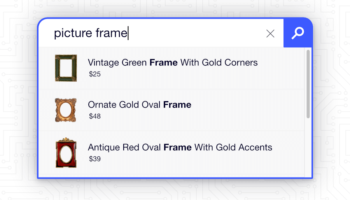As designers and developers, it’s common for us to create designs or demos to present for review. We’re supplied with information like the main objective, reasoning for the request, existing examples we might use as inspiration, and answers to questions we’ve asked. When it’s time to send that out for review, there are some do’s and don’ts to keep in mind to make the review and revision process go smoothly.
Guide the reviewer through your thought process.
Explain why decisions were made and under what conditions. If in your discovery and discussion about the project, something important was shared that factored into a decision, make that known. Sending over something to review and simply asking, “Let us know what you think.” doesn’t tell the reviewer what you are wanting to know and can lead to feedback that isn’t focused on what you’re currently working on.
“Based on the feedback provided about the importance of quickly sharing the newest products to the store, we’ve added a section to the top of the page featuring these new products, which is simple and easy to update.”
If you can anticipate certain questions, feedback, or reactions to aspects of what you’re sharing, provide responses with your request.
Maybe a new section of a website was inspired by a similar section on a website provided to model from. After reviewing the example and considering how it would work best for this specific case, you might suggest some differences in certain aspects. Maybe it’s adding an online store, but there are more products or categories than the example, so you determine a slightly different layout to the menu or how all the categories are listed to accommodate for more categories.
“Since the new store has many more categories than the example, we went with a revised menu design from the original that still has the preferred look, but we’ve modified how the expanding submenus work to make it easier for users to navigate through.”
If you are working on a phased approach, or want feedback on some fundamental decisions early in the process, make that clear.
Provide specific requests and make it known what items are still a work in progress. This helps give context for the entire journey and make it clear that some future decisions are based on current decisions being made now.
“We’d like feedback on the new menu layout. We’ve made some modifications to how submenus work to accommodate the number of product categories. The mobile menu work is dependent on how we structure the menu at desktop screens, so disregard that until we finalize this on desktop.”
Providing guidance in your decisions and what type of feedback you are needing helps keep things moving forward, shows your effort to understand needs and respect time spent gathering and sharing them, as well as assures your expertise in the subject matter. It increases thoughtful, informed, and more confident responses that help everyone involved get to a final product that everyone is excited about and performs as expected.





